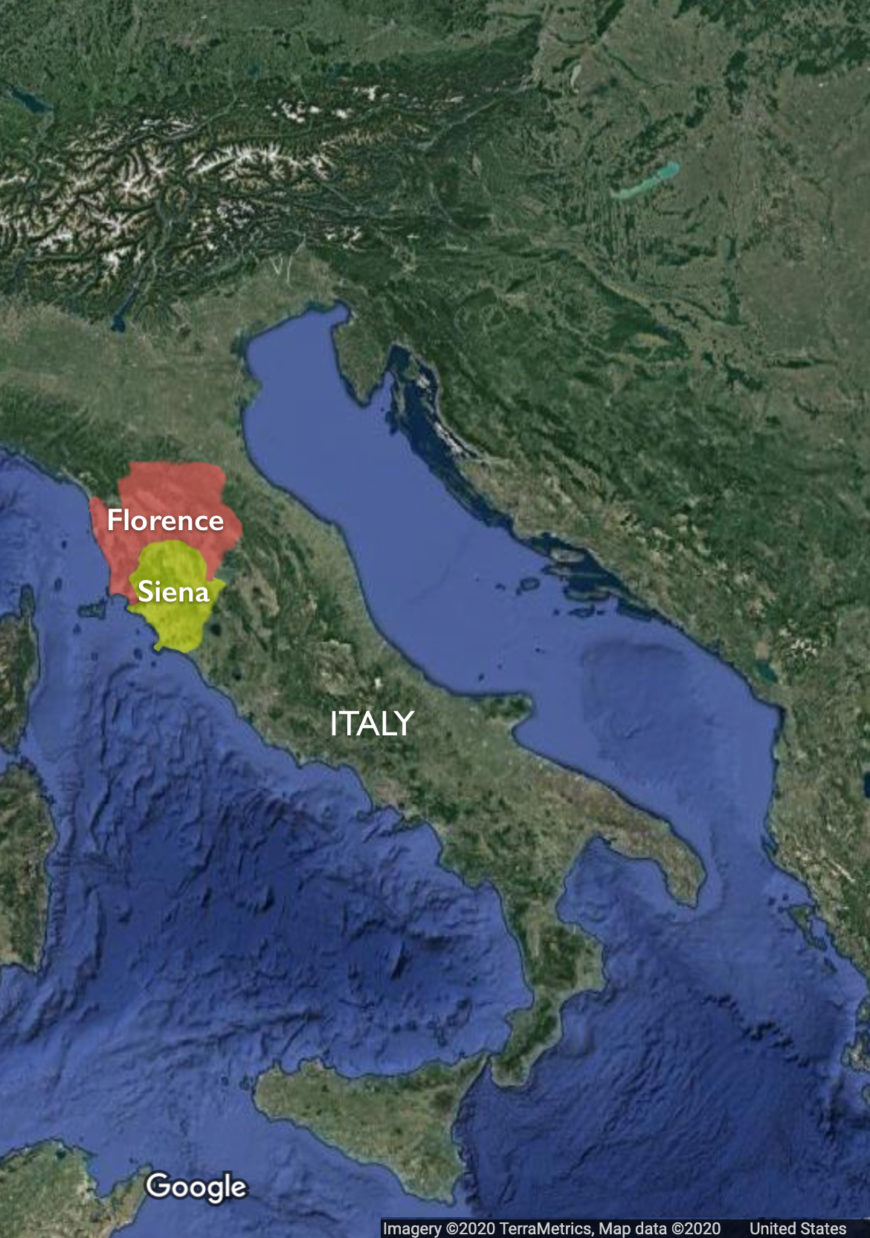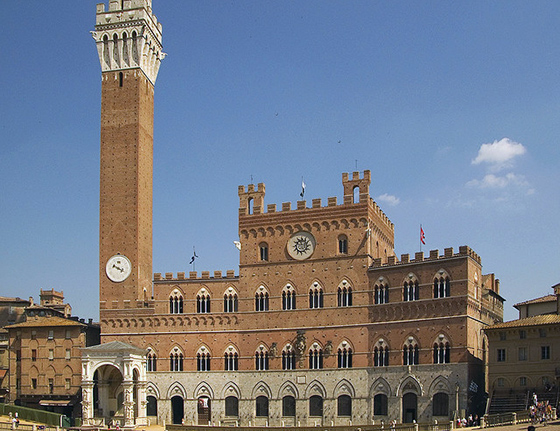Siena in the Late Gothic

For centuries, Siena’s role in the history of European art was under-appreciated. This is partly because its moment of greatest influence occurred just before the Renaissance, a period commonly associated with the nearby city of Florence (both Florence and Siena were independent city-states in Italy at this time). But history—even art history—is written by the victors. So when Siena’s position of power faded while Florence remained one of the financial and artistic centers of Europe, the achievements of Sienese artists slid slowly into the background.
Art historians now know that the development of style in these two city-states was closely intertwined. The artists of one inevitably influenced the other, even in later periods. It is not an exaggeration to say that, at the height of its artistic flourishing, Siena was unsurpassed in its fame for producing celebrated painters.

Like many cities today, the Sienese were acutely aware of how art and architecture shaped the city’s identity in the eyes of both natives and visitors. The communal government was controlled by the “Nove,” or the Nine, a rotating group of representatives chosen from the city’s leading families. The Nove dominated art patronage during the period, helping to decide the layout of the city and its largest buildings, selecting committees to oversee large public projects, and subsidizing the decoration of churches.
Sienese art of the period was communally oriented in a few other ways. The central government and various churches hired local Sienese artists, almost exclusively, to produce the most important paintings. Such a preference for native sons hints at a general pride in the city’s painters, known throughout Italy for the quality of their work (this was not the case with sculpture). There were also a few examples of large works of art created for private individuals. Compare this to Florence at the time, where rich citizens often bought the right to decorate family chapels in large churches and where painters from other cities were sometimes awarded prestigious commissions.[1]
- Dr. Joanna Milk Mac Farland, "Siena in the Late Gothic, an introduction," in Smarthistory, December 30, 2015, accessed February 14, 2023, https://smarthistory.org/siena-in-the-late-gothic-an-introduction ↵

